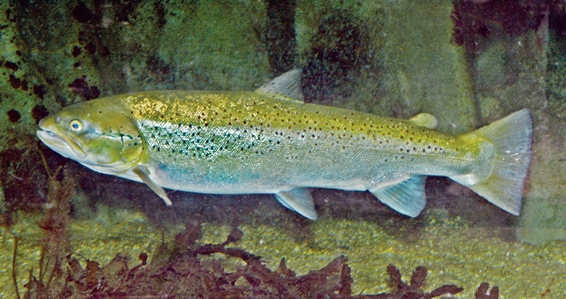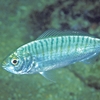General Description
Body long, moderately deep, slightly compressed, tail base moderately deep, with a single short-based dorsal fin on the middle of the back, and a small fleshy adipose fin far back on the body. Last anal-fin ray pressed back against body in adults. Pelvic fins abdominal, pectoral fins low on sides. Mouth large reaching beyond eye, jaws with prominent teeth. Sea-run individuals are silvery with greyish back and faint dark spots, whereas those is in estuaries are silvery brown to brownish-green with obvious spots, both have black spots on the dorsal fin and a reddish-brown adipose fin. To 1.4 m, usually 40-90 cm, and a weigh of 23 kg.
Biology
Although salmonids are native to Northern Hemisphere waters, these popular angling and food fishes have been introduced to many parts of the world. Large mature trout, escapees from stocked populations and sea-cage fish farms, are occasionally found in estuaries and coastal waters.
Habitat
Occasionally found in estuarine and shallow coastal waters as adults.
Open water
Species Group
Depth
Water Column
Max Size
1.4 m
Commercial Species
No
Global Dispersal
Introduced to Australia
Conservation Status
- DSE Advisory List : Not listed
- EPBC Act 1999 : Not listed
- IUCN Red List : Least Concern





